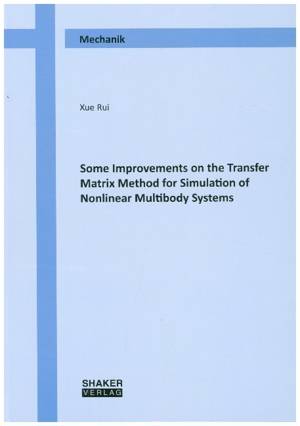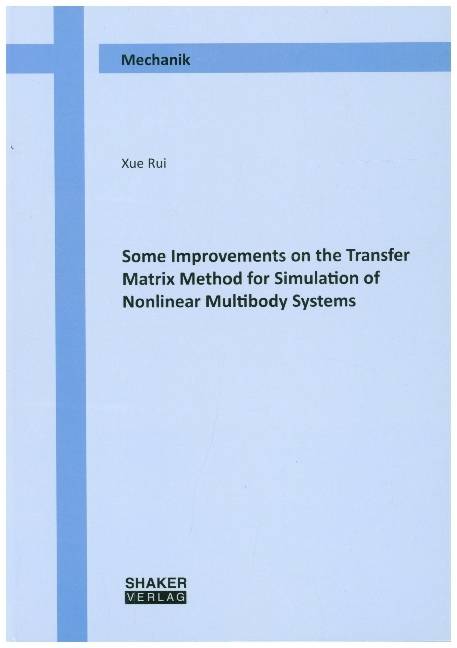
- Retrait gratuit dans votre magasin Club
- 7.000.000 titres dans notre catalogue
- Payer en toute sécurité
- Toujours un magasin près de chez vous
- Retrait gratuit dans votre magasin Club
- 7.000.0000 titres dans notre catalogue
- Payer en toute sécurité
- Toujours un magasin près de chez vous
Some Improvements on the Transfer Matrix Method for Simulation of Nonlinear Multibody Systems
Dissertationsschrift
Xue Rui
49,45 €
+ 98 points
Description
The multibody system transfer matrix method is a rather novel modeling method developed over recent 28 years. It has gained great attention and been used widely to solve about 150 kinds of various engineering problems with some advantages over classical dynamics methods, such as low matrix order independent of degree-of-freedom, high computational speed, and high programmability. To further improve the multibody system transfer matrix method w.r.t. these features is one of the main research contents of the national key project of the Chinese government.In the book, several forms of transfer equations and transfer matrices of a multi-input rigid body, a multi-hinge subsystem, subsystems composed of both, and various hinges are deduced for the newest version of the multibody system transfer matrix method using different strategies. Based on the results, four automatic deduction principles of the overall transfer equation are stated, enriching the multibody system transfer matrix method and its transfer matrix library.Especially a reduced transfer matrix method based on Riccati relations is deduced using both ordinary element transfer matrices and decoupled hinge equations for chain, closed-loop, tree and general systems, respectively. The boundary conditions of the system are always strictly satisfied during the entire computational process. As a result, the truncation and accumulation errors are reduced and the computational stability is improved compared with the classical version of multibody system transfer matrix method, while computational speed is the same as for the new version of the multibody system transfer matrix method.
Spécifications
Parties prenantes
- Auteur(s) :
- Editeur:
Contenu
- Nombre de pages :
- 202
- Langue:
- Anglais
- Collection :
Caractéristiques
- EAN:
- 9783844084283
- Format:
- Livre relié
- Dimensions :
- 156 mm x 19 mm
- Poids :
- 412 g

Les avis
Nous publions uniquement les avis qui respectent les conditions requises. Consultez nos conditions pour les avis.






